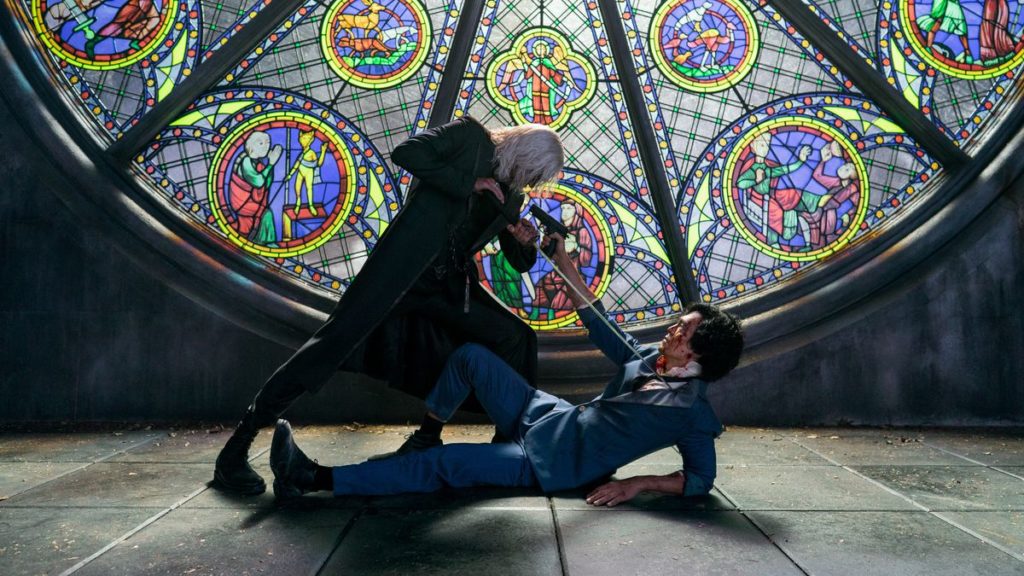Cowboy Bebop is one of those seminal anime series that have remained beloved despite having significantly shorter lengths than shounen mainstays such as Naruto and One Piece. Since being announced, Netflix’s live-action adaptation has been met with cautious optimism, and that hesitation now appears to be well founded. The show isn’t outright horrible, but it’s a consistently lesser version of its source material, often trying to take new routes with familiar territory that don’t entirely work out.
Bounty hunters Spike Spiegel (John Cho), Jet Black (Mustafa Shakir)- and later joined by Faye Valentine (Daniella Pineda)- chase after criminals throughout the solar system, traveling in an old, retrofitted fish trawler named Bebop. They also have to deal with their pasts: Spike left behind a life as an assassin, Jet is an ex-cop that got betrayed by another cop and Faye is an amnesiac who was thawed out of cryosleep, trying to find clues about her past.
On the surface level, Cowboy Bebop takes pains to get elements of its source material right, from costumes and to set designs and music, most of which is contributed by Yoko Kanno, who defined the jazz-infused music of the original anime series. The intro is also a faithful rendition of the original opening, and some iconic scenes are recreated with satisfying attention to detail, such as the cathedral fight sequence in The Ballad of Fallen Angels.

However, there are so many elements that don’t work.
The way the action is shot can feel especially jarring at first, and the constant use of dutch angles gets tiring pretty fast. The tone is campy as opposed to the detached melancholy of the original. Perhaps the campiness is an attempt to translate the inherent absurdity of anime as a medium. As the show progresses, the camp isn’t as annoying, but it bleeds into interpretations of the characters that are distinctly different from the source material. Faye, in particular, curses like a sailor and feels a lot more impetuous and impulsive than her anime counterpart. Radical Ed only appears in the season’s closing moments, but her energy is translated too literally in the show, to the point that it becomes gratingly obnoxious.
Then there are the changes with Spike’s love interest, Julia (Elene Satine) and his antagonist, Vicious (Alex Hassell). Both of their roles are expanded, and with Julia in particular there was a potential way to increase her agency in the story and flesh her out. However, the way it culminates in the climax feels hackneyed and unearned.
Vicious is portrayed as an insecure, abusive criminal who is only on the Syndicate because his father is an important higher-up in the organization.
Despite these and other elements holding the show back, Cowboy Bebop does have some good moments, such as when Faye discovers important information about her past and the penultimate episode, which sheds light on Spike’s past with Vicious and Julia. Unfortunately, these moments aren’t enough to save the show. Although the adaptation was viewed for 74 million hours according to Netflix, there was a significant drop-off in the next week. This, coupled with the fan backlash, prompted Netflix to cancel the show after one season.
Is there even a point to watching Cowboy Bebop now? Probably not, since it didn’t do enough to stand out on its own away from the shadow of the original. It would be better to watch (or rewatch) the original and see why it still stands the test of time.